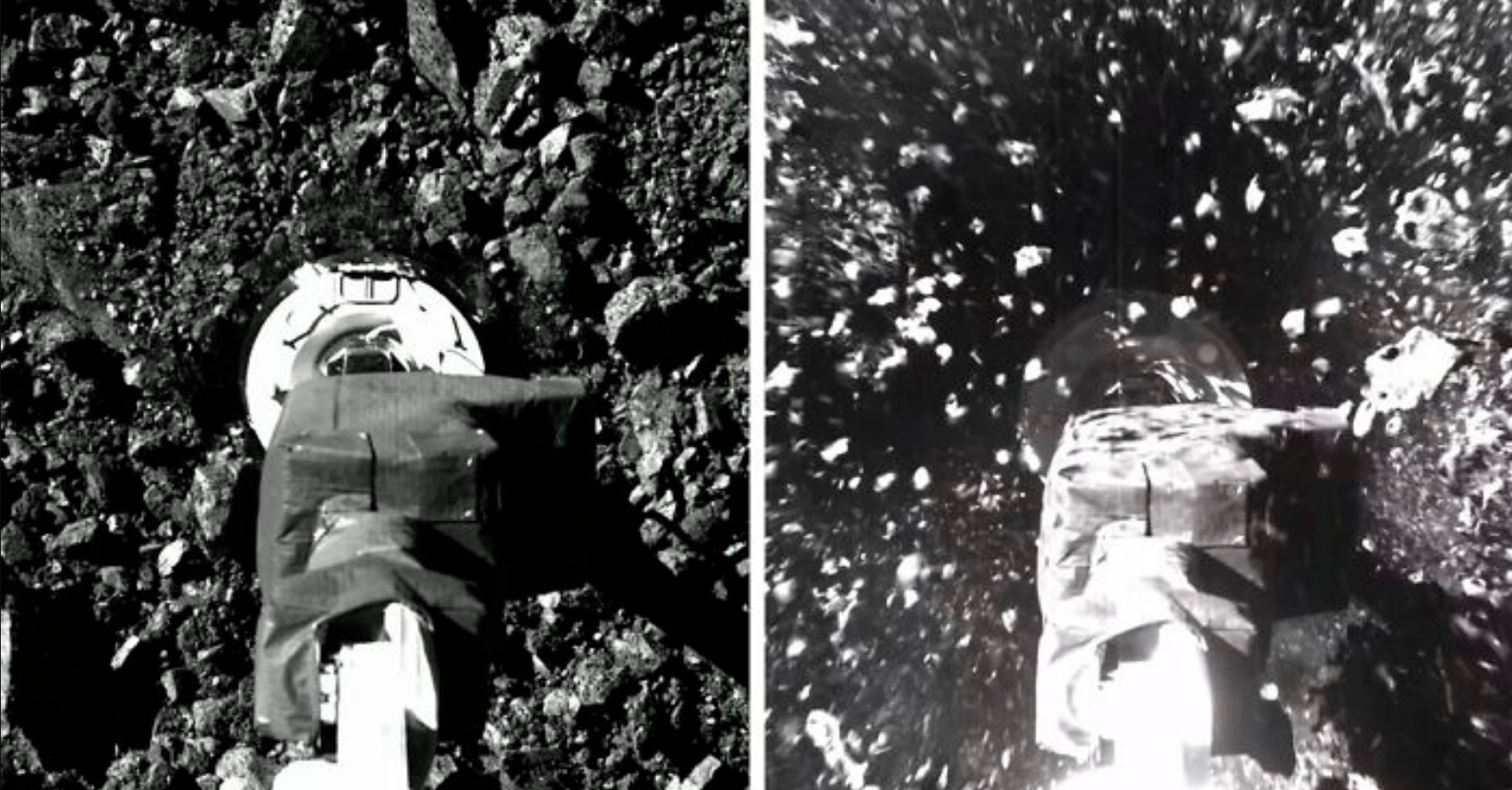 The Mind Unleashed
The Mind Unleashed NASA’s Osiris-Rex spacecraft landed on an asteroid 200 million miles away to bring a sample of its dust to bring back to earth for testing.
By
NASA’s Osiris-Rex spacecraft historically landed on an asteroid 200 million miles away last Tuesday to vacuum up a sample of its rock and dust to bring back to earth for testing. Footage shows the complex operation, including the small amount of time that the craft touched the asteroid’s named Bennu’s surface, Business Insider reported.
NASA’s mission was codenamed Osiris-Rex, it intends to return a specimen of the asteroid to Earth. The Osiris-Rex probe seemed to complete its 4-hour descent according to plan.
“Transcendental. I can’t believe we actually pulled this off,” Dante Lauretta, the mission’s principal investigator, said during NASA’s live broadcast of the operation. “The spacecraft did everything it was supposed to do.”
Osiris-Rex snapped several photos throughout its operation. Last Wednesday, NASA released footage which shows the landing. In the video, the spacecraft’s sample-collection arm lands in the asteroid’s and shoots up dust called regolith. One second later, the arm shoots nitrogen gas at the ground, which stirs up the asteroids rubble filling the air.
NASA hopes that it will be able to return the regolith to Earth for testing. Asteroids in our solar system are believed to be made of ancient rock from the beginnings of our star system 4.5 billion years ago. Scientists hope studying asteroids can help them understand how life began.
Scientists expect to design a plan to deflect Bennu if its future path puts it at risk of an impact with Earth by studying its regolith rocks. According to Lauretta, the rocks appeared very weak compared to Earth’s rocks. This is a positive thing and more likely this means the spacecraft collected a good sample.
“These rocks might be very weak compared to what we’re used to on Earth,” Lauretta said.
NASA and its engineering partner, Lockheed Martin, will now determine whether or not the spacecraft engulfed enough regolith for testing. In order to receive confirmation that the probe can begin its long journey home. The craft needs a maximum total of at least 2.1 ounces (60 grams) to be given the “OK” to return to base.
If the craft didn’t get enough, the probe will try again on another part of the asteroid in January next year. You can watch the historic landing in the video below!

